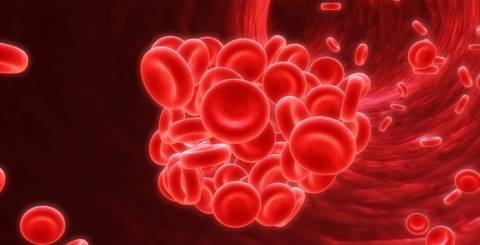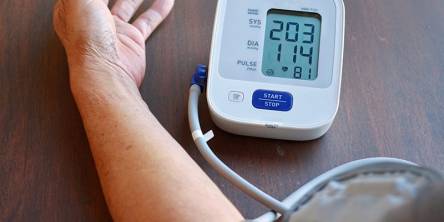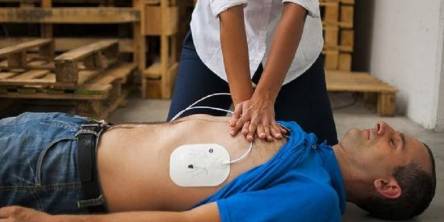Warning Signs of Blood Clots in the Body

Blood clotting is a necessary process that in certain instances prevents the body from losing too much blood. When you get a paper cut or a minor injury, a blood clot stops the bleeding and falls apart. However, sometimes blood clots may form in veins and arteries and don’t always dissolve on their own. These can be dangerous and potentially life-threatening.
Knowing the warning signs of blood clots will help you get quick medical treatment and avoid fatal complications.
Limbs. When a blood clot forms in veins, it is known as venous thromboembolism. Blood clots form in the deep veins of the body that carry blood back to the heart; most commonly lower legs and arms, and can travel to the heart or lungs. The symptoms may develop gradually or not manifest at all. Usually, they include:
- Pain, which can range from a dull sensation to intense
- Swelling, either in the exact spot of the clot formation or of the entire limb
- A warm sensation
- Tenderness
- Pale or bluish discoloration
- Pain in the calf when stretching toes upward
- Trouble breathing, if the clot has detached and moved to lungs.
Symptoms usually depend on the clot size. This is why you may not experience any symptoms or have just minor swelling without pain. The larger the clot is, the larger the area of swelling (up to the entire limb) and the more severe pain you’ll have. It is noteworthy that clots seldom form in both limbs at the same time. Therefore, the chances of having a clot increase if the symptoms are localized to one limb.
Lungs. When a blood clot travels to lungs – pulmonary embolism – the symptoms may include:
- Chest pain
- Shortness of breath or breathing problems
- Palpitations
- Sweating
- Feeling dizzy or lightheaded
- Coughing up blood.
Heart. Although seldom, a blood clot may form in or around the heart and cause a heart attack. The warning signs are:
- Sudden and severe chest pain that may radiate to arms
- Excessive sweating
- Trouble breathing
- Shortness of breath.
Abdomen. The blood clots in the abdomen usually develop due to liver disease, diverticulitis, and administration of birth control pills. If a clot forms in the veins that drain blood from the intestines, there could develop symptoms that usually resemble those of a stomach virus or food poisoning:
- Severe abdominal pain, which may worsen after meals
- Nausea and vomiting
- Diarrhea
- Bloating
- Bloody stools.
Kidneys. If a clot forms in the kidneys, it can prevent them from removing toxins and wastes from the bloodstream and lead to kidney failure. The warning signs can be:
- Flank pain, pain in the side of the belly or in the lower back, legs, and thighs
- Fever
- Severe leg swelling
- High blood pressure
- Bloody urine
- Low urine output
- Trouble breathing
- Nausea and vomiting.
Brain. A blood clot in the brain may develop due to plaques in the walls of the vessels that supply blood to the brain. The symptoms can be:
- Severe headache
- Difficulty speaking or seeing
- General weakness
- Seizure.
Blood clots in the brain may result from a blow to the head and consequent concussion. Or it may result from a clot that broke free from the other parts of the body and traveled in the bloodstream to the brain, causing a stroke.
When clotting takes places in the arteries, it is known as arterial thrombosis. This is extremely dangerous as clots obstruct the blood flow to vital organs. Most often arterial thrombosis affects older people and results in myocardial infarction, cerebral hemorrhage, and peripheral arterial disease.
Even though symptoms of blood clots often resemble the symptoms of other diseases, if you develop any of the above-mentioned signs, contact your GP promptly. Remember that blood clots are treatable when spotted in time.
Similar Articles
It can be difficult to know when you have high blood pressure because the symptoms and signs are not always obvious. If left unchecked, however, it can gradually damage your blood vessels, heart, kidneys, and other vital body organs. Blood pressure fluctuations can also be dangerous.
A reliable AED plays a vital role in increasing the survival rate of SCA. This post lists 8 reasons to tell why we need a reliable AED device and something you need to know about the AED.
Normal heart rate in people is 60-100 beats per minute. But if the heart rate is lower than 60 beats per minute, that may indicate bradycardia development. If the pulse is constantly 30-40 beats per minute and it doesn’t increase even during physical activity, it’s a quite dangerous condition.
In recent decades, Western medicine has shifted its main focus quite dramatically, from infectious diseases towards cancer and chronic conditions, such as heart, stomach and liver issues.
According to statistics, people suffering from diabetes are 1.5 times more likely to develop a stroke than those who don’t have this disease. So why does it happen? The connection between these two conditions lies in the way the body transforms glucose into energy.
Black, green, white or red teas come from the same plant Camellia Sinensis. The difference lies in the processing method: Green tea is made from the buds and top two leaves of a shrub, which are then quickly steamed to prevent fermentation






